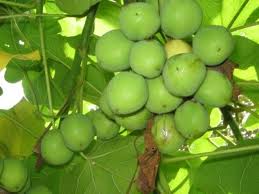
Jatropha the wonder plant produces seeds with an oil content of 37%. The oil can be combusted as fuel without being refined.
It burns with clear smoke-free flame, tested successfully as fuel for simple diesel engine. The by-products are press cake a good organic fertilizer, oil contains also insecticide. The Jatropha plantation occupy about 50% of the planted land and to utilized the rest of land in sustainable manner like different intercropping options, patterns and agro- technologies.
Jatropha curcus is a drought-resistant perennial, growing well in marginal/poor soil. It is easy to establish, grows relatively quickly and lives, producing seeds for 50 years.
Two Mozambican companies in partnership with an Portuguese corporation , signed in Maputo an agreement to set up a new consortium for the production of biodiesel from “Jatropha” in the central Mozambican province of Manica.
Under the agreement, the new consortium “Moçamgalp” project will cover 10,000 hectares (24,710 acres) in the first stage that will be later expanded to 50,000 hectares (123,552 acres).
Biodiesel is a substitute for, or an additive to, diesel fuel that is derived from the oils and fats of plants, like Sunflower, Canola or Jatropha.
It is an alternative fuel that can be used in diesel engines and provides power similar to conventional diesel fuel.
Biodiesel is a renewable domestically produced liquid fuel that can help reduce the countries dependence on foreign oil imports.
Recent environmental and economic concerns (Kyoto Protocol) have prompted resurgence in the use of biodiesel throughout the world. In 1991, the European Community, (EC) proposed a 90% tax reduction for the use of biofuels, including biodiesel.
Today, 21 countries worldwide, produce biodiesel.
The cost of biodiesel is largely dependent on the choice of feedstock and the size of the production facility.
If Jatropha feedstock is used, the fuel will cost depending on the country approximately US $ 0,40 per liter plus tax when applicable.
Jatropha stacks up nicely compared with other feedstocks, as soybeans and rapeseed have a relatively low oil yield compared with Jatropha — 375 kilograms per hectare for soybeans in the United States (280 gallons per acre) and 1,000 kilograms per hectare of rapeseed in Europe (740 gallons per acre) to 3,000 kilograms per hectare of Jatropha (2,226 gallons per acre) in India. Good planning, quality planting material, standardized agronomy practices and good crop management could increase yields.




[…] Jatropha curcas is a non-edible shrub that is native to Central America. Its seeds contain high amounts of oil that can be used for a variety of bio-based materials including feedstock substitutes for the diesel, petrochemical and jet fuel industries. It can be effectively grown on marginal lands that are considered undesirable for food crops, making it a viable option as a new biofuel. A Jatropha plantation also creates a positive ecological impact, creating a revitalized ecosystem and soil regeneration. […]